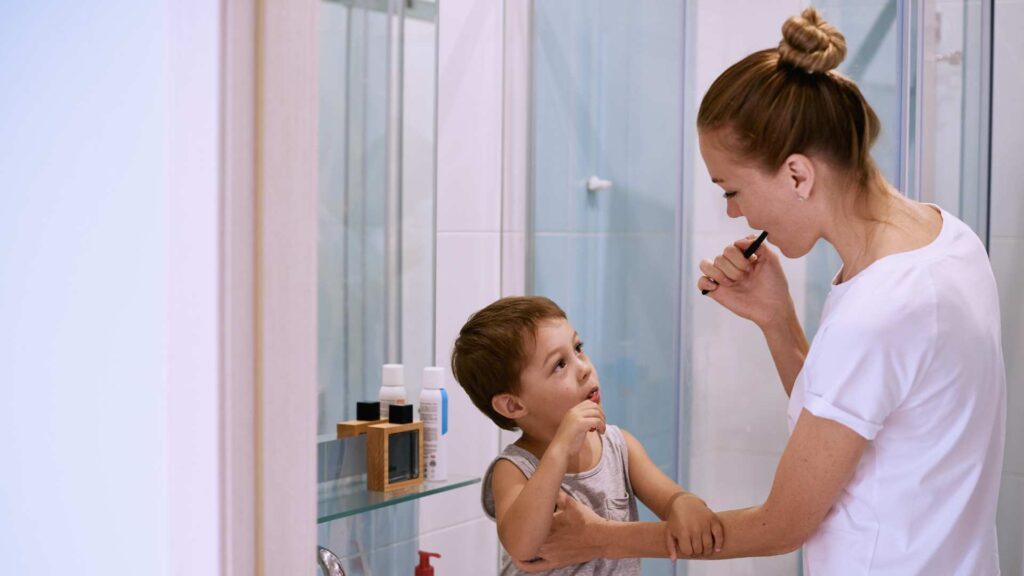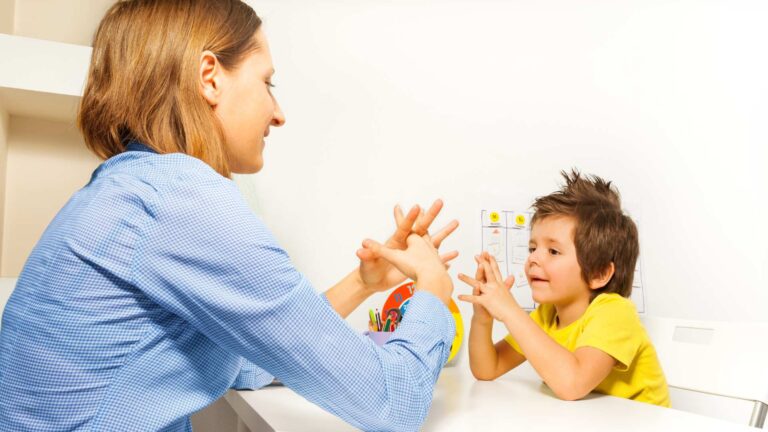Table of Contents
What is Prompt Hierarchy?
Autism Spectrum Disorder (ASD) manifests in various degrees of severity, necessitating tailored assistance or therapeutic interventions for individuals to manage their behaviors effectively. Among the variety of strategies available to address the intricate traits of ASD, the prompt hierarchy in ABA therapy offers a meticulously structured method to encourage the development of new skills and facilitate progress.
So, what is a prompt hierarchy? At the heart of ABA therapy lies the goal of enhancing behavior and fostering the acquisition of adaptive skills. Within this framework, the concept of prompt hierarchy in ABA therapy encompasses a series of strategies or techniques designed to assist individuals in learning new skills or behaviors. These strategies deploy varying levels of support or “prompts” aimed at steering the individual toward achieving the target response.
In this insightful blog from ABA Centers of Florida, we dive deeper into the prompt hierarchy technique—a tool wielded by ABA therapists to empower kids and teens with ASD in improving crucial life skills. Moreover, we’ll share actionable strategies for families in Doral, Miramar, Jensen Beach, Tampa, Orlando, Boca Raton, and throughout Florida, enabling them to apply the principles of prompt hierarchy within the comfort of their homes.
How Prompt Hierarchy in ABA Therapy Works
At the heart of effective teaching and behavior modification strategies, the concept of prompt hierarchy in ABA therapy stands out for its systematic approach to supporting learning. By systematically providing different levels of guidance, it aims to encourage specific responses, ultimately streamlining the educational process. Let’s see how it works:
1. Systematic Approach: Prompt hierarchy follows a systematic approach that involves categorizing prompts into different levels based on their intrusiveness and the individual’s level of proficiency in the targeted skill or behavior.
2. Least-to-Most Prompting: This approach entails initially providing the least intrusive prompts necessary to elicit the desired response. These prompts may include subtle gestures, subtle verbal cues, or visual aids.
3. Most-to-Least Prompting: Conversely, the most-to-least prompting approach begins with more intrusive prompts and gradually fades them out as the individual demonstrates progress and independence. This method allows for a gradual reduction in prompting intensity as the individual gains mastery over the targeted skill or behavior.
4. Graduated Guidance: Within the prompt hierarchy, graduated guidance involves providing physical assistance or guidance only when necessary. As the individual becomes more proficient, the level of physical support is systematically decreased, ultimately leading to independent performance of the task or skill.
5. Individualized Application: The prompt hierarchy is a powerful tool that ABA therapists can customize to suit the specific requirements and capabilities of each individual. ABA therapists assess the individual’s current skill level, preferences, and learning style to determine the most appropriate prompt hierarchy strategy for optimal learning outcomes.
As explained, the prompts can vary in their level of intrusion or assistance, from very direct to more subtle. Some examples of prompts include:
Physical: Is the direct physical assistance to act. For instance, if the therapist is teaching the child how to pour juice into a cup, they may initially physically guide the child’s hand to hold the juice container and pour it into the cup.
Verbal: Any verbal instruction or question that facilitates the desired response. For example, the therapist may provide verbal instructions such as, “Hold the juice container firmly and slowly pour it into the cup.”
Visual: Any visual cue that helps the person identify the correct response. Following the same example, the ABA therapist can add pictures or drawings on the table showing the sequence of actions involved in pouring juice into a cup could be used.
Modeling: Physical or visual demonstration of the desired response. The therapist demonstrates the action by pouring juice into another cup, showing the child the desired way to perform the task.
Gestural: Signals or gestures indicating the correct response. Here, the therapist might use hand gestures to demonstrate how to tilt the juice container or when to stop pouring.
Positional: Physical or positional placement suggesting the correct response. The juice container and cup are positioned in front of the child, telling the correct spatial arrangement for pouring.
Benefits of Prompt Hierarchy
Imagine a child who is eager to learn and explore the world around them but has difficulty performing everyday tasks that seem simple to others. For families coping with ASD, this situation is all too familiar. That is why neurodiverse families welcome proven methods of skill acquisition, such as prompt hierarchy in ABA therapy, as it has several benefits, including:
- By starting with minimal prompts and gradually increasing assistance as needed, individuals can build confidence and competence incrementally.
- Encourages independence and self-reliance by fading prompts over time. As individuals become more proficient in their skills, they gain confidence and the ability to perform tasks autonomously.
- This technique allows therapists to provide timely error correction and feedback. This feedback helps individuals learn from their mistakes and refine their performance, leading to more efficient skill retention.
- The prompt hierarchy emphasizes promoting generalization and maintenance of skills across different settings. Individuals are encouraged to apply learned skills in real-world situations, enhancing functional competence and adaptability.
- It facilitates the development of communication and social skills through targeted prompting techniques. This development improves individuals’ ability to engage with others and navigate social situations more effectively.
Can Parents Implement Prompt Hierarchy at Home?

At ABA Centers of Florida, we always emphasize the importance of involving parents in every step of the therapy process and ABA sessions. This involvement isn’t just about their commitment to fulfilling and completing the program but also about their deep understanding of their child and the techniques they can apply at home. So yes, parents can apply the techniques used by therapists during the sessions.
Before doing so, communicate your interest in applying these techniques at home to your ABA therapist so they can guide you on the best way to implement them without disrupting the center’s program. During the sessions, observe which prompts the professional is working on and which reinforcements they are using with your kid. As the Behavior Modification study indicates, the effectiveness of prompts varies according to individual preferences and the behavior or complexity of the task you are introducing. Taking both factors into account can improve teaching results.
In addition, you may want to consider the following:
1. Identify Goals: Determine specific skills or behaviors you want to target for improvement in your child. These could include tasks like brushing teeth, getting dressed, or completing homework.
2. Understand Prompt Levels: Familiarize yourself with the different levels of prompts, such as physical, verbal, visual, modeling, gestural, and positional. Understand when and how to use each type of prompt effectively.
3. Start with the Least Intrusive Prompt: Begin by using the least intrusive prompt necessary for your child to succeed in the task. For example, if teaching them to tie their shoes, start with verbal instructions before moving to physical guidance if needed.
4. Fade Prompts Gradually: As your child becomes more proficient, gradually fade the prompts by reducing the level of assistance provided. You can give him fewer verbal cues, provide less physical assistance, or rely more on visual cues.
5. Provide Positive Reinforcement: Offer praise and encouragement for each successful attempt, regardless of how much prompting was needed. Positive reinforcement will motivate your child to continue working on the skill independently.
ABA Centers of Florida and Autism Care Services
With the advancement of care services for the neurodiverse community, ABA therapy has stood out for its non-invasive behavioral approach, providing individuals, parents, and caregivers with methods such as prompt hierarchy to maximize children’s capacity and develop new valuable skills.
At ABA Centers of Florida, we have assisted hundreds of families in effectively understanding and navigating the spectrum. Our ABA specialists provide clients with highly personalized therapies to foster greater independence and help them reach their full potential.
If you’re interested in learning more about our ABA therapy programs and insurance coverage, don’t hesitate to get in touch with us at (772) 773-1975 or leave a message on our website.








